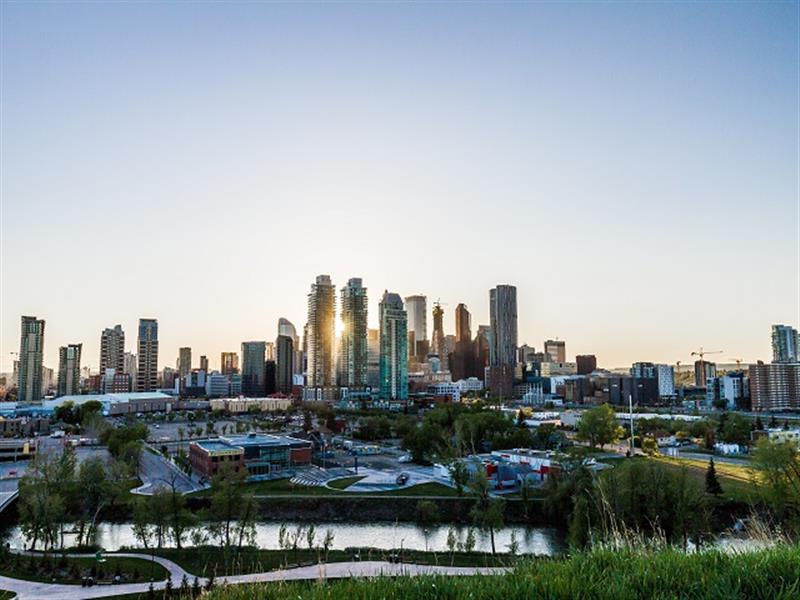
Canada, features a diverse range of house types that mirror its historical roots and modern innovation. Notable house types in Calgary include Victorian-style homes with intricate details, Colonial Revival houses with classical elegance, and modern architectural marvels, such as minimalist and mid-century modern homes. The city's skyline is adorned with geodesic domes, and A-frame cabins offer cozy retreats. Calgary also presents contemporary mansions, eco-friendly houses, and a commitment to sustainability.
1. Detached property
A detached property, also known as a detached house, is a type of residential structure that stands alone and is not physically connected to any other buildings. This means that it is surrounded by open space on all sides, typically having a yard or garden. Detached properties are separate from neighboring houses, in contrast to semi-detached or attached houses that share one or more common walls.
Detached properties offer several advantages and characteristics:
- Privacy: Detached houses provide a higher level of privacy compared to attached or semi-detached properties. With no shared walls, residents have more control over their living space and are less likely to be disturbed by neighbors.
- Outdoor Space: Detached properties often come with larger outdoor spaces, such as front and backyards, which can be used for gardening, recreation, or outdoor activities. This extra space allows for more landscaping and customization.
- Architectural Variety: Detached houses come in a wide range of architectural styles, from historic Victorian homes to modern designs. This diversity allows homeowners to choose a style that suits their preferences.
- Quiet Living: The absence of shared walls can result in a quieter living environment. Residents are less likely to hear noises from adjacent properties, making detached houses appealing for those who value tranquility.
- Property Value: In many real estate markets, detached properties tend to have higher property values compared to attached or semi-detached homes. This can be an advantage for homeowners looking for potential resale value.
2. Attached Property
An attached property, commonly known as a townhouse or row house, is a type of housing unit that shares one or more walls with neighboring properties. Unlike detached houses that stand independently, attached properties are connected side-by-side, forming a row or series of homes.
Here are some key characteristics and features of attached properties:
- Shared Walls: Attached properties are typically designed with shared walls between units. These walls are commonly soundproofed to reduce noise transfer between adjacent homes.
- Space Efficiency: These properties are space-efficient as they share structural elements like walls and, in some cases, infrastructure such as plumbing and electrical systems.
- Cost and Affordability: Attached homes can often be more affordable compared to detached houses, making them an attractive option for first-time homebuyers or individuals seeking urban living at a lower cost.
- Community Living: Living in attached properties often fosters a sense of community among residents, as they share common spaces, amenities, and, in some cases, homeowner associations.
- Urban Living: Townhouses and row houses are frequently found in urban areas, offering convenient access to city amenities, services, and transportation due to their compact and efficient use of space.
3. Apartment
An apartment is a self-contained, residential unit within a larger building or complex, typically designed for individual or family occupancy. Apartments can vary in size, layout, and amenities, and they are a common form of housing in urban and suburban areas. Here are some key features and characteristics of apartments:
- Individual Units: Apartments are individual living units contained within a larger building or complex. Each unit is typically separated from the others, providing residents with their own private space.
- Shared Building: Apartments are part of a shared building that may contain multiple units. Residents often share common areas such as hallways, entrances, and sometimes communal facilities like gyms, swimming pools, or laundry rooms.
- Diverse Types: Apartments come in various forms, including studio apartments (a single-room unit with a kitchen and bathroom), one-bedroom, two-bedroom, and larger multi-bedroom units. There are also luxury apartments, penthouses, and affordable housing options.
- Rental and Ownership: Apartments can be rented or owned. Rental apartments involve paying regular rent to the landlord or property management company, while owned apartments, often called condominiums, are purchased by individual owners.
- Amenities: Many apartment complexes offer amenities such as on-site security, parking, elevators, and in some cases, additional features like rooftop gardens or community rooms.
4, Modern Architectural Marvels
- Minimalist Masterpieces : In the heart of Calgary, you'll find minimalist houses that emphasize simplicity and clean lines. These homes are a testament to the beauty of less being more, where the architecture itself becomes the art.
- Mid-Century Modern Homes : Mid-century modern homes are a blend of functionality and style, featuring open spaces, large windows, and flat planes. These houses are a delightful reflection of the post-World War II era.
5. Traditional Houses in Calgary
- Victorian Style Homes : Calgary is home to a plethora of Victorian-style houses, each more charming than the last. These elegant structures, characterized by intricate details, steep roofs, and inviting porches, transport you to a bygone era.
- Colonial Revival Houses : The Colonial Revival style in Calgary is a nod to the past, with symmetrical facades, large columns, and gabled roofs. These houses exude timeless grace and historical significance.